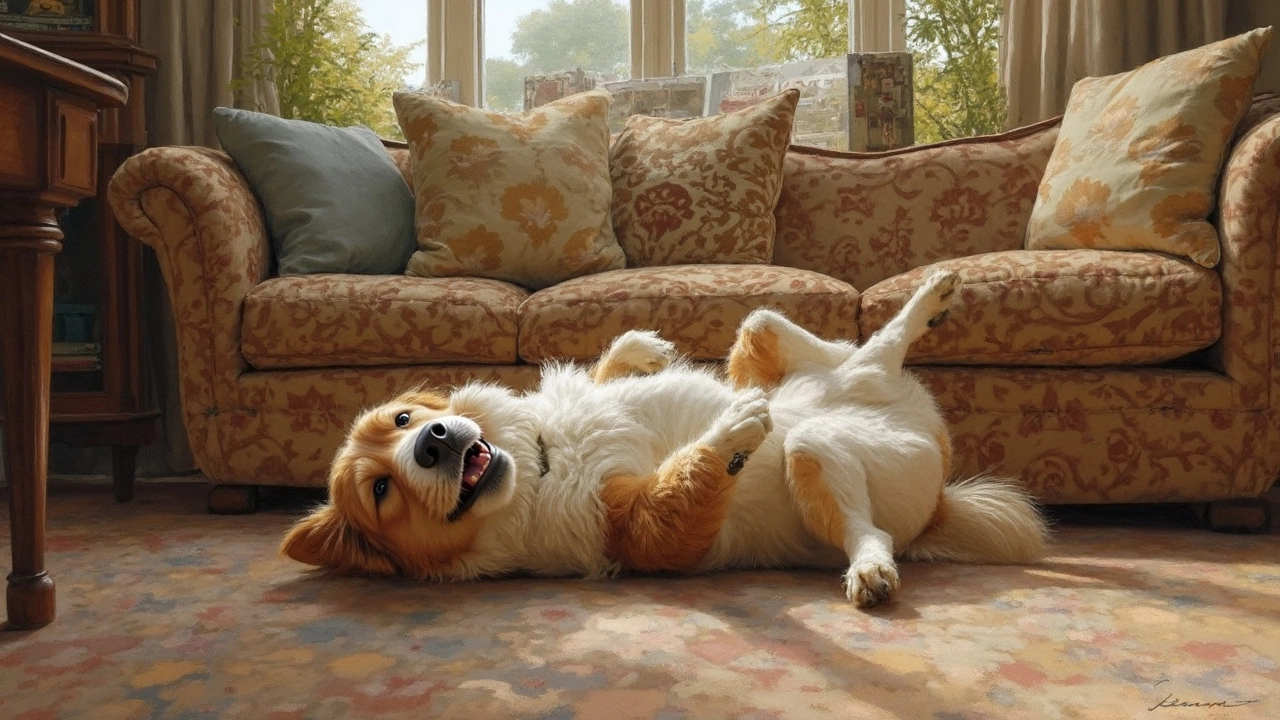Dog Belly Rubs: Why They Feel Good and How to Do Them Right
Ever notice your pup flop onto his back and wait for a belly rub? That’s a clear sign he trusts you and loves the attention. A good belly rub isn’t just a treat – it can calm anxiety, improve circulation, and deepen the bond you share. Below are the basics every dog owner should know before you start scratching that soft spot.
When Is a Belly Rub Safe?
Not every dog wants a belly rub all the time. Look for a relaxed posture: ears back, tail wagging loosely, and a soft, open mouth. If your dog is tense, growling, or snapping, skip the rub and try a different kind of petting. Puppies under three months often have delicate spines, so keep pressure light and brief.
Also, avoid belly rubs if your dog is recovering from surgery, has a recent injury, or shows signs of skin irritation. A quick check with your vet can clear up any doubts.
How to Give a Great Belly Rub
Start by letting your dog approach and sniff your hand. Once he seems comfortable, gently place your palm on his belly and use slow, circular motions. Use the pads of your fingers, not your nails, and keep the pressure soft – think of a gentle massage, not a firm knead.
Move from the center outward, covering the ribcage and lower belly. If your dog leans into the touch, you’re doing it right. Stop if he rolls over or pushes you away; that’s his way of saying enough.Keep sessions short – three to five minutes is enough for most dogs. Over‑rub can make the area sore or cause overstimulation, which may lead to unwanted excitement later.
Mix belly rubs with other types of petting, like a back scratch or a chin rub. This variety keeps your dog interested and helps you learn which spots he enjoys most.
Finally, watch for signs of enjoyment: soft eyes, relaxed breathing, or a gentle wag. If your pup seems to drift off to a happy daze, you’ve nailed it.
Remember, belly rubs are a simple way to show love, reduce stress, and strengthen the trust between you and your dog. Use these tips, stay tuned to your dog’s signals, and both of you will look forward to the next belly‑rub session.
Dog Belly Rubs: What They Mean and Why They Matter
Ever wonder why your dog lets you rub his belly? It's more than just an invitation for a tummy scratch. Discover the reasons behind this behavior and how it relates to their trust and health. Learn the signals your dog is giving and how supplements might play a role in ensuring these belly rubs are a joyful experience for both of you.
